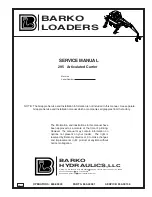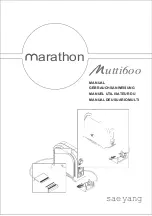
surface of the pier. Cutting a hole out of the quilt allows it to drop over the insulating cover of
the seismometer and cover the pier.
Thoroughly insulate the roof of the vault and any exposed sides. Seal the door and any other
openings. Do not use a thermostat-controlled heating or cooling system in the vault because
the temperature cycling will show up as periodic noise in the seismic signal. See
"Recommendations for Pier Construction" on page 35
Insulate the seismometer to protect it from drafts and temperature change. To achieve
optimal levelness and insulation of the seismometer, the following optional equipment is
recommended:
l
a Carrying Case / Insulating Cover (See
"Cables and Accessories" on page 12
)
l
In addition, if you are installing model number TC120-PH2, TC120-PH2-XC, TC20-PH2
or TC20-PH2-XC as a surface vault seismometer, you will also need the optional leveling
bubble (Nanometrics part number MSC0225) and the adjustable leveling feet kit
(Nanometrics part number 17245). See
"Cables and Accessories" on page 12
for a
description of these items.
l
See also
"Insulating a Trillium Compact Vault with a Rigid Foam Box" on page 45
for
another method of insulating the seismometer.
See
"Performing a Vault Installation" on the next page
Temporary deployment on rock
Installations on rock are at the surface level and the seismometer must be in a sealed,
insulated enclosure to protect it from the elements or other environmental disturbances. To
achieve optimal levelness and insulation, the following optional equipment is recommended:
l
a leveling cradle and a Carrying Case / Insulating Cover (See
l
if you are installing model number TC120-PH2, TC120-PH2-XC, TC20-PH2 or TC20-PH2-
XC as a surface vault seismometer, you will also need the optional leveling bubble
(Nanometrics part number MSC0225). See
1.3 "Cables and Accessories" on page 12
for
descriptions of these items.
Chapter 3 - Installing a Trillium Compact Vault Seismometer
16889R10 • 2020-11-12
Page 33
















































